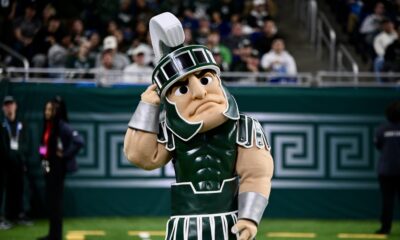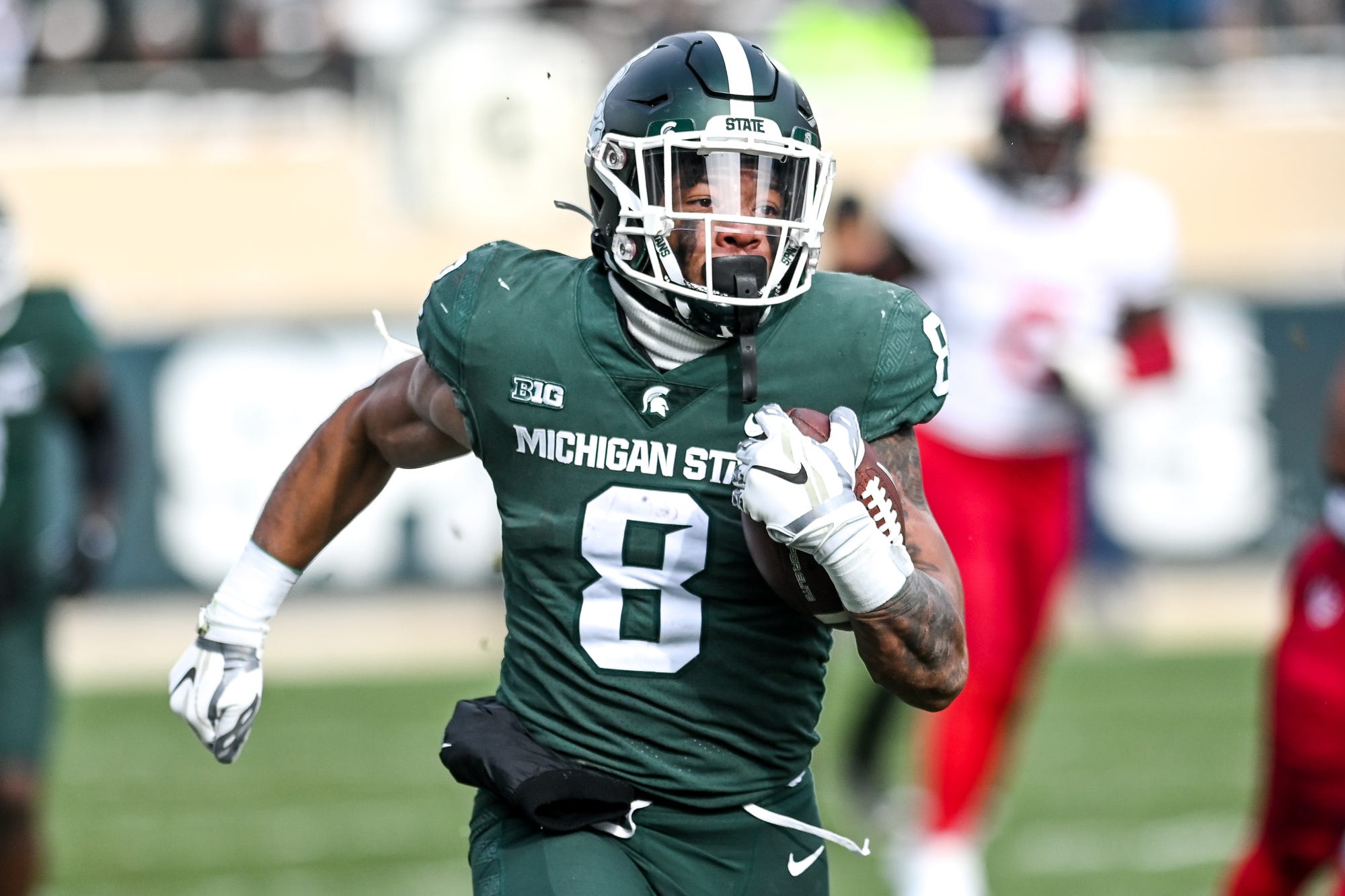Michigan State football has a history of success with running the ball. But not a lot of that success is recent.
Michigan State football has always loved running the da*n ball. Lorenzo White, Javon Ringer, TJ Duckett, Le’veon Bell, Jeremey Langford, and Kenneth Walker III have all cemented themselves as some of the greatest backs that have worn the green and white. It’s also safe to say Michigan State is at its best when it can run the ball on its own terms.
The issue is, however, the Spartans are usually at their worst when they can’t.
Since 2000, MSU has only had nine 1,000-yard rushers, and K9 is the only rusher to break the 1,000-yard mark since the Spartans made the playoff. By comparison to some notable programs in the sport, it’s not great.
Now, you may call it unfair to compare MSU to these schools, I do not. Wanting to compete with the big programs and actually attempting to compete are two different things. If this program wants to accomplish what they and the fanbase want, then a 1,000-yard rusher is the bare minimum.
When Michigan State has a 1,000-yard rusher, you can expect nine wins, a bowl game, and most likely the Paul Bunyan Trophy. When they don’t? It’s a coin flip that Michigan State even makes a bowl game and Paul likely spends his time in Ann Arbor.
There has been an evolution to the running back position, where touches are being spread across 2-3 backs as opposed to running the tread off of a single back. This would in theory contribute to a lowered possibility of an individual milestone of hitting 1,000 yards, but for one to hit that mark, they only would need to average 83 yards a game. Nevertheless, team rushing performance is an important thing to review.
In Mel Tucker’s year zero, Michigan State football had two rushing touchdowns. Two. Neither came from the running back position. If that stat is not emblematic of how anemic and sputtering the MSU rushing attack was amidst a global pandemic I don’t know which one would be. In terms of EPA/play, (given field position, down & distance, are you doing better or worse than expected on a given play), Michigan State ranked 126th in rush EPA/play at -0.34. This means that every time MSU ran the ball, they were losing .34 points off their expected total. Less than ideal.
Despite how magical K9’s 2021 campaign was, Michigan State’s overall rushing EPA/play was only 0.04, good for 65th in the nation. For reference, MSU’s rushing performance against Michigan produced an epa/play of 0.51 and Walker III’s 58-yard touchdown run to tie the game at 30 had an EPA of 7.24.
With K9 in Seattle, Michigan State regressed back to 2020 form, despite bringing in two promising transfers in Jalen Berger and Jarek Broussard. MSU fell back to 129th in EPA/play when rushing at -0.20. The Spartans also ranked 111th in rushing attempts per game, meaning they didn’t run a lot, and when they did, it was bad, bad, bad.
It’s beyond cliche for coaches to say that it’s imperative to establish the run, and we’ve rolled our eyes when Tucker and Jay Johnson have said as much on the podium. But they’re right. Michigan State quite literally lives and dies with running the ball.
Going into 2023, I am personally optimistic about the ability of the offensive line to take a step forward with regard to run blocking, and I think the addition of Jaren Mangham will help move the sticks in short-yardage situations. A full cycle for Jalen Berger in East Lansing will hopefully yield positives as well.
Michigan State has the opportunity to re-establish itself as a high-tier Big Ten team in 2023, but it starts with running the da*n ball.

 FOOTBALL2 days ago
FOOTBALL2 days ago
 FOOTBALL1 day ago
FOOTBALL1 day ago
 MORE SPORTS1 week ago
MORE SPORTS1 week ago
 FOOTBALL6 days ago
FOOTBALL6 days ago
 BASKETBALL6 days ago
BASKETBALL6 days ago






